Spandex Fabric – Engineered for Ultimate Performance & Precision Fit
As a leading innovator in stretch fabric technology, Szoneier Fabrics transforms premium spandex into high-performance textiles that move with your vision. Our engineered elastane blends deliver unmatched flexibility, superior shape retention, and next-to-skin comfort – empowering activewear, swimwear, and fashion that performs without limits.
Your Design, Amplified by Spandex
Custom Elasticity: Tailor stretch levels (20%-300%) and recovery rates for your specific application
Advanced Blending: Perfectly balanced spandex-cotton, spandex-polyester, or technical hybrid compositions
Functional Finishes: Matte, glossy, moisture-wicking, or compression-enhanced surfaces
Why Global Brands Trust Szoneier
✓ Low MOQ Specialists: Prototype with just 50m, scale to 50,000+
✓ 72-Hour Rapid Sampling: Test concepts faster with free fabric swatches
✓ OEKO-TEX® Certified: Skin-safe elasticity for sustainable fashion
✓ Precision Dyeing: Vibrant colors that stretch without cracking
From yoga leggings that sculpt to competitive swimsuits that streamline, we engineer the stretch solutions that make your designs move markets. Start with 3 free technical fabric cards today – no obligations, just possibilities.
You just choose wholesale any Spandex fabric types for your customization, and we will take care of the rest.
Selecting the perfect fabric for your product line has never been easier! As a top rated fabric manufacturer, we offer a wide variety of wholesale Cotton fabrics that can be customized to suit your exact needs. Whether you’re looking for lightweight cotton for clothing, durable options for bags, or specialized fabrics with water-resistant or UV-protective coatings, we’ve got you covered. With endless options in colors, textures, and finishes, our fabrics are perfect for fashion, home textiles, outdoor gear, and more. Partner with us to bring your ideas to life with high-quality materials, competitive prices, and flexible customization options.

4 way stretch spandex fabric

80 polyester 20 Spandex Fabric

88 Polyester 12 Spandex Fabric

90 Polyester 10 Spandex

90 polyester 10 spandex Fabric

92 Polyester 8 Spandex Fabric

95 polyester 5 spandex Fabric

98 Cotton 2 Spandex Fabric

Bamboo Spandex Fabric

Cotton Spandex Fabric

Digital Printed Spandex Fabric

Elastane Spandex Fabric

Jersey Spandex Fabric

Leopard Spandex Fabric

lycra Jersey Spandex Fabric

Matte Satin Spandex fabric

Metallic Spandex Fabric

Polyester Elastane Spandex Fabric

Printed Flower Spandex Fabric

rayon spandex fabric

Spandex Denim Fabric

spandex fabric for swimwear

Spandex Mesh Fabric

sports lycra fabric
Wholesale and Custom Fabric Categories
Spandex (Lycra®/elastane) is prized for its exceptional elasticity, durability, and comfort, making it indispensable across multiple industries.
Potential applications of Spandex Fabric




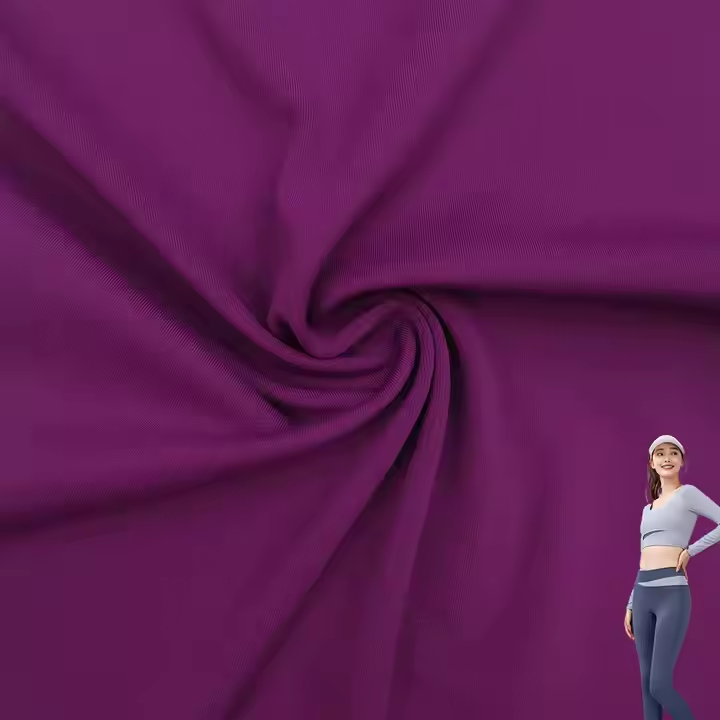



Sportswear and Activewear
Spandex fabric is the top choice for sportswear and activewear due to its exceptional elasticity, moisture-wicking properties, and breathable comfort. Whether it's yoga, running, cycling, or gym workouts, spandex allows athletes to move freely without restrictions. Its ability to stretch up to five times its original size makes it perfect for body-hugging fits that retain shape even after intense activities. Additionally, its moisture management capabilities keep athletes cool and dry, while its durable and abrasion-resistant nature ensures long-lasting use. Spandex sportswear is ideal for both professional athletes and fitness enthusiasts.

Dancewear and Performance Costumes
Spandex (also known as Lycra® or elastane) is a highly elastic synthetic fiber widely used in dancewear and performance costumes due to its exceptional stretch, recovery, and form-fitting properties. It is often blended with other fabrics (e.g., nylon, polyester, or cotton) to enhance durability, comfort, and flexibility.

Outdoor and Adventure Gear
Spandex is a reliable choice for outdoor and adventure gear, including hiking pants, cycling shorts, and climbing apparel. Its stretch and recovery properties make it ideal for activities that require freedom of movement and flexibility. Additionally, spandex fabrics can be treated to offer UV protection, moisture-wicking, and abrasion resistance, making them suitable for extreme conditions and rugged environments.
Why Partner With Your Trusted Spandex Fabric Manufacturer for Your Custom Product Needs?
When it comes to crafting high-performance, stretchable, and stylish products, Spandex fabric is the ultimate choice. As a leading manufacturer with years of expertise in Spandex production, we offer both wholesale solutions and fully customizable options tailored to your unique specifications. Equipped with state-of-the-art technology, Szoneier Factory produces premium Spandex fabrics in a variety of blends, weights, and finishes—perfect for activewear, swimwear, sportswear, and more.
By partnering with us, you gain access to superior-quality materials, competitive pricing, and flexible manufacturing capabilities. Our strict quality control ensures every batch meets industry standards and exceeds your expectations. Whether you need moisture-wicking, compression, breathable, or eco-friendly recycled Spandex, we deliver innovative solutions with specialized treatments like antimicrobial coatings, four-way stretch, or seamless finishes.
Let us bring your designs to life with custom dyeing, printing, and fabric enhancements tailored to your brand. Choose us as your trusted Spandex fabric manufacturer and experience a seamless, reliable partnership for all your bespoke textile needs!
Fabric Dyeing And Finishing Process
The fabric dyeing and finishing process is a crucial phase in textile manufacturing, transforming raw materials into vibrant, functional textiles. This process not only enhances the aesthetic appeal of the fabric but also improves its durability and usability
Dyeing
Dyeing is the process of adding color to fabric. Different dyeing techniques can be used depending on the type of fabric and the desired outcome: Fiber Dyeing: Color is applied directly to the fibers before they are spun into yarn. This method is often used for wool and silk and allows for rich, deep colors. Yarn Dyeing: The yarn is dyed before weaving into fabric. This technique is ideal for patterns like stripes or plaids and is commonly used for cotton fabrics. Piece Dyeing: In this method, the fabric is dyed after it has been woven. It is the most common method used for bulk production of colored fabrics. Batch Dyeing: Fabric is dyed in large batches, ensuring consistency in color across large quantities.
Printing
Printing adds intricate designs to fabric using various methods. The most common printing techniques include: Screen Printing: A stencil is created for each color, and dye is pushed through a mesh screen onto the fabric. This method is ideal for bold, vivid designs and is widely used for T-shirts and home textiles. Digital Printing: This modern technique uses inkjet technology to print designs directly onto fabric. It allows for high detail and quick turnaround times, making it perfect for custom designs. Rotary Screen Printing: Similar to screen printing but uses a cylindrical screen for continuous printing, making it efficient for large runs.
Coating
Coating involves applying a layer of material to the fabric to enhance its properties. This can include: Waterproofing: Fabrics are coated with a water-repellent finish to protect against moisture. This is commonly used for outdoor gear and clothing. Flame Resistance: Fabrics can be coated with fire-retardant chemicals to meet safety standards for specific applications, such as upholstery and workwear. Stain Resistance: A coating can be applied to fabrics to prevent stains from setting in, making them easier to clean and maintain.
Color Weaving
Color weaving involves incorporating colored yarns into the fabric during the weaving process. This method allows for intricate patterns and designs, such as:Jacquard Weaving: Developed in the 19th century, this advanced technique employs computerized looms to independently control thousands of warp threads, enabling photorealistic imagery and elaborate motifs. Modern applications range from luxury tapestries to technical textiles with embedded smart patterns, particularly valued in high-end upholstery and narrative-driven fabric art. Twill Weave: Characterized by its signature diagonal ribbing, this method interlaces colored weft threads in staggered sequences that enhance structural integrity. The angled texture not only camouflages stains but also improves abrasion resistance, making it ideal for durable workwear, designer denim, and performance-oriented home textiles like decorative pillow covers.
Fabric Structure Types
If you need help choosing the right fabric structure for your project, feel free to reach out to our expert team for guidance!
The plain neoprene structure is the most basic and widely used form of neoprene, where the material is typically formed without any distinct texture or pattern. This simple design offers excellent flexibility, insulation, and durability. Plain neoprene is often used in wetsuits, dive suits, and protective gear due to its ability to provide thermal insulation and flexibility. The smooth surface allows for easy movement and a comfortable fit, making it suitable for water sports and outdoor activities.
1. Plain Neoprene
Open-cell neoprene features a structure where the cells within the material are interconnected, allowing air and water to pass through. This makes the fabric more breathable and flexible but less insulated compared to closed-cell options. Open-cell neoprene is commonly used in dive gear, thermal insulation for clothing, and sports braces where breathability is important. It is also often used in impact-resistant padding because of its cushioning properties.
2. Open-Cell Neoprene
In closed-cell neoprene, the material consists of cells that are not interconnected, providing a better barrier to air and water. This structure enhances insulation and buoyancy, making it ideal for wetsuits, diving suits, fishing waders, and thermal clothing used in cold-water conditions. The closed-cell structure helps keep the body warm by trapping air within the material and preventing water absorption, making it suitable for cold-water environments.
3. Closed-Cell Neoprene
Foam-filled neoprene is a variation where a layer of foam is inserted between the neoprene layers. This provides enhanced insulation and cushioning properties. Foam-filled neoprene is often used in protective gear, sports pads, and insulated clothing, offering additional shock absorption and comfort. The foam layer also improves the flexibility of the material, making it ideal for activities like kayaking, surfing, or any sport requiring impact protection.
4. Foam-Filled Neoprene
Textured neoprene features a surface with added patterns or embossing, giving it a more aesthetic and functional design. The texture can enhance grip, durability, and comfort, making it useful in sports gloves, protective knee pads, and equipment covers. The added texture also allows for better aeration, making it more comfortable for extended wear, especially in protective gear or sports apparel.
5. Textured Neoprene
Fabric Weaving Process
01
Single-Sided Fabrics
Single-sided fabrics are produced using a straight forward weaving technique where the design and texture are visible on only one side of the fabric. The reverse side often has a plain, untextured appearance. This type of fabric is commonly used in garments, linings, and home textiles, where only one side is intended to be seen. The benefits of single-sided fabrics include simplicity in design and cost-effectiveness in production. Examples include satin, which features a glossy surface on one side, and muslin, known for its lightweight and breathable qualities.
02
Knitted Fabrics
Knitted fabrics are created by interlocking loops of yarn, resulting in a flexible and stretchy material. This process allows for a variety of textures and patterns, making knitted fabrics popular in apparel, activewear, and home textiles. Knitting can be performed using different techniques, such as warp knitting and weft knitting. Warp knitting involves yarns running parallel to the fabric’s length, providing greater stability, while weft knitting has yarns woven horizontally, offering more stretch. The unique properties of knitted fabrics, such as breathability and comfort, make them ideal for casual wear and sportswear.
03
Double-Sided Fabrics
Double-sided fabrics, also known as reversible fabrics, are woven to have distinct designs or textures on both sides. This type of fabric is produced by interlacing two layers of yarn, creating a thicker and more substantial textile. Double-sided fabrics are highly versatile and can be used in a variety of applications, from fashion to upholstery. The ability to use either side of the fabric adds value and functionality, allowing designers to create reversible garments and accessories. Common examples include double-faced wool, often used in coats, and plush velvet, popular in home furnishings.
04
Weft Knitting
Weft knitting is a specific type of knitting technique where the yarn is fed horizontally across the fabric. This process creates a series of interlocking loops, resulting in a stretchy and comfortable fabric. Weft knitted fabrics are widely used in garments such as T-shirts, sweaters, and leggings due to their excellent elasticity and ability to conform to the body. Additionally, weft knitting allows for a wide range of stitch patterns, offering designers creative flexibility in their projects. The softness and drape of weft knitted fabrics make them a favorite choice in casual and activewear.
Fabric Physical and Chemical Characteristics
Spandex, also known as elastane or Lycra, is a synthetic fiber celebrated for its exceptional elasticity and versatility. Here’s a detailed exploration of its physical properties:
Elasticity and Stretchability:
- Spandex’s standout feature is its ability to stretch 5-8 times its original length (500%-800% elongation) with a recovery rate exceeding 95%. This elasticity stems from its segmented polyurethane structure, allowing it to return to its initial shape after stretching. This makes it ideal for tight-fitting garments like leggings, swimwear, and compression wear.
Lightweight and Fine Texture:
- Spandex fibers are typically fine, ranging from 20 to 70 denier, resulting in a lightweight fabric (often 100-300g/m² when blended). Its smooth, silky texture enhances comfort, especially in blends with cotton or polyester, making it feel soft against the skin despite its synthetic nature.
Durability and Tensile Strength:
- While pure spandex has moderate tensile strength (50-100N/5cm), its durability shines in blends, where it complements stronger fibers like nylon or polyester. Abrasion resistance is modest (10,000-30,000 Martindale cycles), relying on the companion fiber for longevity. Alone, it’s prone to wear, but in blends, it maintains shape under repeated stretching.
Moisture Management:
- Spandex has low absorbency (1%-2% moisture uptake), resisting water retention and drying quickly—often within 30-60 minutes. This fast-drying property suits activewear, though its low breathability (MVTR ~10-20g/m²/24h) can trap heat unless blended with porous fibers like cotton.
Appearance:
- Spandex can be dyed to achieve vibrant or matte finishes, though it often appears slightly glossy due to its smooth surface. Its fine denier allows it to blend seamlessly, enhancing the drape and flexibility of fabrics without dominating their look.
Flexibility and Softness:
- With a Shore A hardness of 60-80, spandex offers a soft, pliable feel, adapting to body contours. This flexibility supports a wide range of motion, critical for sportswear and dance costumes.
Composition:
- Spandex is a polyurethane-based fiber, formed by reacting polyether or polyester polyols with diisocyanates. This creates a block copolymer with hard and soft segments—the soft segments provide elasticity, while hard segments ensure structural integrity. Additives like stabilizers or pigments refine its properties.
Chemical Resistance:
- Acids and Alkalis: Spandex resists mild acids and alkalis (pH 4-10) but degrades under strong conditions (e.g., sulfuric acid or bleach), which break down polyurethane chains, reducing stretch.
- Chlorine: Prolonged exposure to chlorine (e.g., in pools) weakens spandex, causing up to 30% elasticity loss after 50-100 hours. Anti-chlorine treatments can extend its life.
- Oils and Solvents: It resists body oils and sweat but is vulnerable to organic solvents like acetone, which dissolve polyurethane bonds.
Heat Sensitivity:
- Spandex softens at 120°C and decomposes above 150°C-180°C, limiting its exposure to high heat (e.g., dryers or hot irons). Heat-set blends with polyester or nylon improve stability, but pure spandex requires low-temperature care.
UV Stability:
- Unprotected spandex degrades under UV light, losing strength and color after 200-500 hours of exposure due to chain scission. UV inhibitors or blending with UV-resistant fibers (e.g., polyester) mitigate this, extending outdoor use to 6-12 months.
Dyeability:
- Spandex accepts disperse dyes, achieving good colorfastness (grade 4-5, ISO 105), though its dye uptake is lower than polyester or nylon, often resulting in slightly muted tones in blends. This supports vibrant, long-lasting designs.
Environmental Interaction:
- Spandex resists mildew due to low moisture retention, but prolonged humidity can weaken untreated fibers over years. Antibacterial treatments enhance its suitability for activewear or medical uses.

Fabric Printing Styles
Fabric printing is an essential aspect of textile design, allowing for the creation of unique patterns and vibrant colors that enhance the aesthetic appeal of fabrics. Various printing styles cater to different tastes and applications, providing endless possibilities for customization. Let’s explore some of the most popular fabric printing styles:
1. Intricate Printing
2. Black and White Printing
3. Botanical Prints
4. Geometric Prints
5. Knitted Jacquard
6. Abstract Prints
Fabric Post-processing
Spandex fabric undergoes comprehensive post-processing treatments to enhance performance and comfort. Key processes include heat setting for shape retention, dyeing and color fixation for vibrant hues, and softening treatments for a smooth feel. Additional finishes, like anti-pilling and abrasion resistance, maintain fabric quality, while moisture-wicking and anti-odor treatments boost comfort during active use. For outdoor applications, UV protection treatments are essential. Lastly, quality inspections ensure elasticity, durability, and color fastness, making spandex fabric ideal for sportswear, activewear, and fashion apparel.
1. Heat Setting: Stabilizes the fabric structure and sets the desired shape and dimensions.
- Process: The fabric is subjected to controlled heat (usually between 180-200°C) while under tension.
Benefits: Improves dimensional stability, wrinkle resistance, and elastic recovery.
Applications: Ensures that spandex garments retain their shape after repeated stretching and washing.
2. Dyeing and Color Fixation: Adds vibrant and long-lasting colors to spandex fabric.
- Dye Types:
- Disperse Dyes: Commonly used due to high affinity for synthetic fibers.
- Acid Dyes: Occasionally used when blended with natural fibers like cotton.
- Process: Typically involves jet dyeing or continuous dyeing at moderate temperatures to avoid fiber damage.
- Color Fixation: Utilizes fixing agents and heat treatment to ensure colorfastness and resistance to washing and fading.
3. Softening and Finishing: Enhances the hand feel and comfort of spandex fabric.
- Softening Agents: Usually silicone-based or cationic softeners.
- Process: The fabric is immersed or padded with softening solutions and then dried and heat set.
- Benefits: Improves smoothness, flexibility, and softness, essential for sportswear and intimate apparel.
4. Anti-Pilling and Abrasion Resistance Treatment: Prevents the formation of pills (small fiber balls) on the surface and enhances durability.
- Treatment Methods:
- Enzyme Finishing: Breaks down loose fibers that cause pilling.
- Resin Coating: Forms a protective film to reduce friction and abrasion.
- Benefits: Increases fabric longevity and maintains a clean, smooth appearance.
5. Moisture-Wicking and Anti-Odor Treatment: Enhances comfort during active use by managing moisture and odor.
- Techniques:
- Hydrophilic Finishes: Improve moisture absorption and evaporation.
- Anti-Microbial Finishes: Prevent bacterial growth and odors.
- Application: Ideal for sportswear and activewear, where sweat management is crucial.
6. UV Protection Treatment: Increases resistance to ultraviolet radiation, protecting both the fabric and the wearer.
- Method: Applying UV-absorbing chemicals during the finishing process.
- Benefits: Suitable for outdoor sportswear and swimwear, offering enhanced sun protection.
7. Anti-Static and Anti-Wrinkle Treatment: Reduces static buildup and maintains a smooth, wrinkle-free appearance.
- Method: Uses anti-static agents and resin finishing to improve surface smoothness.
- Benefits: Ensures comfort and maintains the fabric’s aesthetic quality.
8. Quality Inspection and Testing: Verifies that the fabric meets performance and quality standards.
- Testing Parameters:
- Elastic Recovery: Assesses the fabric’s ability to return to its original shape.
- Color Fastness: Tests resistance to washing, rubbing, and sunlight.
- Abrasion and Pilling Resistance: Evaluates surface durability.
- Benefits: Guarantees that the final product is reliable and durable, suitable for active and fashion wear.


Fabric GSM
Spandex Fabric GSM Guide: Weight & Applications
GSM (Grams per Square Meter) measures fabric weight and thickness, impacting stretch, durability, and end-use. Below is a breakdown of Spandex (elastane) fabric GSM ranges and their typical applications.
50-100 GSM (Ultra-Lightweight):
- Composition: High spandex content (10%-20%) with fine deniers (5D-20D), blended with ultra-light fibers (e.g., 20D polyester).
- Thickness: Very thin, sheer to semi-sheer.
- Elasticity: Exceptional stretch (600%-850%), recovery >95%.
- Tensile Strength: Low, 20-50N/5cm.
- Properties: Breathable (MVTR ~50-100g/m²/24h), silky, lightweight; low durability (10,000 Martindale cycles).
- Applications: Sheer hosiery, lingerie linings, ultra-light activewear layers (e.g., running shirts).
- Example: 90% polyester/10% 10D spandex at 80 GSM for pantyhose.
- Summary: Perfect for delicate, stretch-focused fabrics where minimal weight and high elasticity are essential, though less robust.
100-150 GSM (Lightweight):
- Composition: 5%-15% spandex (20D-40D) with lightweight fibers (e.g., 50D polyester or cotton).
- Thickness: Thin, slightly opaque.
- Elasticity: 500%-700%, recovery >95%.
- Tensile Strength: 50-80N/5cm.
- Properties: Soft, quick-drying (30-60 mins), comfortable; moderate durability (15,000-20,000 cycles).
- Applications: Swimwear, yoga tops, underwear, stretch tees.
- Example: 95% cotton/5% 30D spandex at 130 GSM for casual tops.
- Summary: Balances stretch and lightness, ideal for versatile, everyday apparel with good comfort and flexibility.
150-200 GSM (Medium-Light):
- Composition: 5%-10% spandex (40D-70D) with denser fibers (e.g., 70D nylon).
- Thickness: Medium-thin, fully opaque.
- Elasticity: 400%-600%, recovery >90%.
- Tensile Strength: 80-120N/5cm.
- Properties: Supportive, smooth, durable (20,000-30,000 cycles); slightly structured.
- Applications: Athletic leggings, sports bras, light compression wear, dancewear.
- Example: 90% polyester/10% 50D spandex at 180 GSM for yoga pants.
- Summary: Offers reliable elasticity and strength, suited for activewear requiring moderate support and resilience.
200-250 GSM (Medium):
- Composition: 5%-15% spandex (70D-100D) with thicker fibers (e.g., 100D polyester).
- Thickness: Medium, structured feel.
- Elasticity: 350%-500%, recovery ~90%.
- Tensile Strength: 120-150N/5cm.
- Properties: Robust, slightly stiff; good abrasion resistance (~30,000 cycles).
- Applications: Stretch jeans, medium shapewear, light upholstery trim.
- Example: 85% cotton/15% 100D spandex at 230 GSM for stretch denim.
- Summary: Combines stretch with durability, perfect for structured apparel with shaping and moderate heft.
- 250-300 GSM (Medium-Heavy):
- Composition: 10%-20% spandex (100D-150D) with heavy fibers (e.g., 150D polyester).
- Thickness: Thick, firm, supportive.
- Elasticity: 300%-400%, recovery ~90%.
- Tensile Strength: 150-200N/5cm.
- Properties: Strong, less flexible; high durability (40,000 cycles).
- Applications: Heavy shapewear, corsets, stretch outerwear, upholstery accents.
- Example: 80% nylon/20% 150D spandex at 280 GSM for girdles.
- Summary: Provides powerful stretch and support, ideal for heavy-duty apparel and structural uses.
300-400 GSM (Heavy):
- Composition: 10%-15% spandex (150D-200D) with robust fibers (e.g., 200D polyester).
- Thickness: Very thick, rigid texture.
- Elasticity: 250%-350%, recovery 85%-90%.
- Tensile Strength: 200-250N/5cm.
- Properties: Ultra-durable, coarse; minimal softness (~50,000 cycles).
- Applications: Industrial elastic panels, heavy stretch straps, orthopedic supports.
- Example: 85% polyester/15% 200D spandex at 350 GSM for braces.
- Summary: Ensures robust elasticity and strength, tailored for industrial and medical applications with significant heft.
400+ GSM (Extra-Heavy):
- Composition: 5%-10% spandex (200D-400D) with extra-heavy fibers (e.g., 300D nylon).
- Thickness: Extremely thick, industrial-grade.
- Elasticity: 150%-250%, recovery ~80%-85%.
- Tensile Strength: 250-400N/5cm.
- Properties: Maximum strength, stiff; high durability (>50,000 cycles).
- Applications: Heavy-duty elastic cords, cargo tie-downs, reinforced stretch fabrics.
- Example: 90% nylon/10% 400D spandex at 450 GSM for industrial straps.
- Summary: Delivers extreme durability with moderate stretch, designed for specialized, high-tension uses.
Factory Direct Wholesale Stock Cotton Fabric Styles
High-quality source manufacturers, providing bulk orders, spot and customized solutions for global retailers. Guaranteed fast delivery.
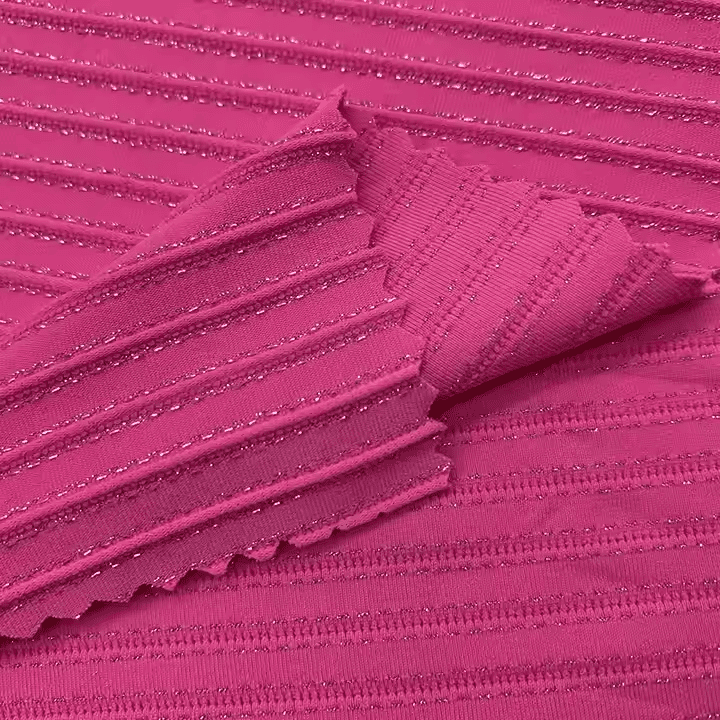
86 Nylon 5 Silver 9 Spandex Fabric

87 Polyester 13 Spandex Fabric

90 Polyester 10 Spandex

Cotton Spandex Sateen Fabric
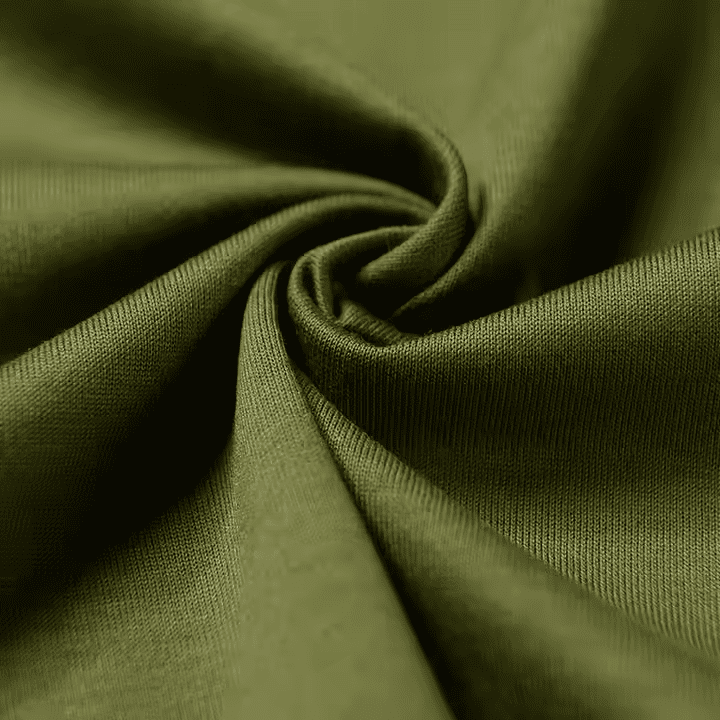
Double-sided Spandex Fabric

Elastic Mesh Spandex Fabric

Glossy Satin Spandex Fabric

Jersey 92 Polyester 8 Spandex Fabric

Jersey Spandex Fabric

Nylon Spandex Fabric

Spandex Knitted Fabric

Sportswear Spandex Fabric
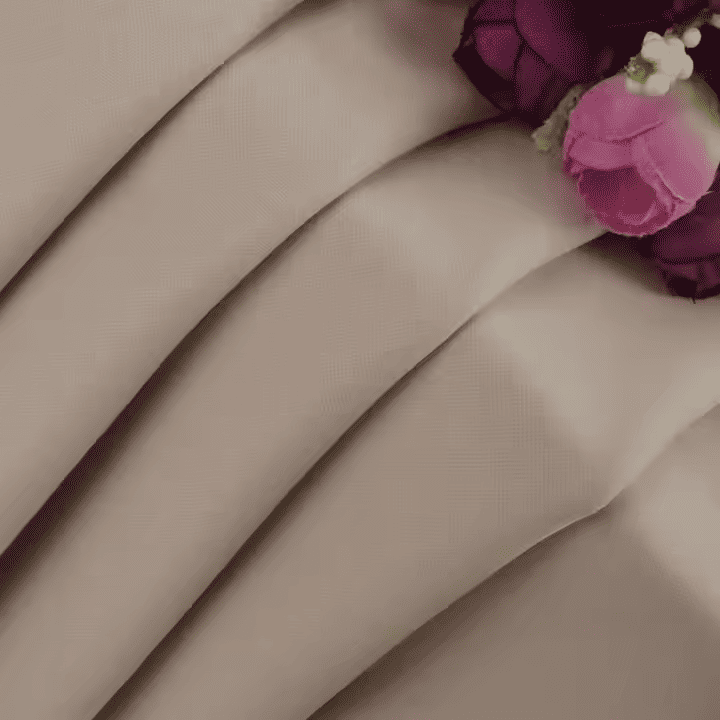
Stretch Spandex Fabric

Tencel Wear Spandex Fabric

Twill Spandex Fabric
Fabric Post Treatment Processes
Fabric finishing processes play a vital role in enhancing the quality and performance of our polyester fabrics. At the Szoneier mill, we use advanced technologies to ensure that each fabric meets the highest standards of durability, softness and functionality. Our finishing processes include dyeing, finishing and coating methods that not only enhance color vividness and fade resistance, but also enhance properties such as water and stain resistance. Through the careful application of these processes, we ensure that our polyester fabrics are not only beautiful, but also meet the needs of a variety of applications. We have listed 50 processes to make them the perfect choice for your needs.
What is Pre-shrinking ?
Pre-shrinking is a process that uses physical methods to reduce the shrinkage of fabric after water immersion, thereby lowering the shrinkage rate. Mechanical pre-shrinking involves wetting the fabric with steam or mist, followed by mechanical squeezing in the warp direction, which increases the amplitude of buckling waves, and then subjecting it to relaxed drying.
What is Stretching ?
Stretching is a finishing process that utilizes the plasticity of fibers like cellulose, silk, and wool in humid conditions. By gradually expanding the fabric to a specified width, this method stabilizes its shape during drying. Known as dimensional finishing, it helps the fabric maintain its intended dimensions and improves its overall structure, reducing distortion during use.
What is Sizing ?
Sizing is a technique that involves applying a sizing solution to the fabric and subsequently drying it to enhance its stiffness and body. This process improves the fabric’s strength, making it easier to handle during manufacturing and providing a more substantial feel. Sizing also helps reduce fraying and ensures better dye absorption, resulting in improved color depth and uniformity.
What is Heat Setting ?
Heat setting is a finishing process that stabilizes thermoplastic fibers in synthetic materials like nylon and polyester, preventing shrinkage or deformation. By applying controlled heat and pressure, it maintains the fabric’s dimensions and enhances stability, improving durability and providing a firmer hand feel for better quality and performance in various applications.
What is Whitening ?
Whitening enhances the brightness and whiteness of textiles using complementary colors. Techniques include blue tinting, which adds a subtle blue hue to reduce yellowing, and fluorescent whitening, which uses optical brighteners to reflect more light. These methods improve the fabric’s appearance, making it look cleaner and more vibrant.
What is Calendering, Electric Calendering, and Embossing ?
Calendering is a process that flattens fabric surfaces and creates patterns using heat and humidity to enhance luster. Flat calendering employs hard and soft rollers for a smooth finish, while soft calendering uses two soft rollers for a gentler gloss. Electric calendering utilizes heated rollers, and embossing adds patterns with engraved steel rollers, resulting in a lustrous look.
What is Napping ?
Napping is a finishing process that employs abrasive rollers or belts to raise a layer of short, dense fibers on the fabric’s surface. This brushing technique produces a plush nap, enhancing both the warp and weft yarns. The result is a soft, textured fabric that feels warm and inviting, making it ideal for clothing, blankets, and upholstery while improving its aesthetic appeal.
What is Raising ?
Raising is the process of lifting fibers from the surface of the fabric using dense needles or pricking, creating a layer of pile, also known as pile raising. This technique is primarily applied to coarse wool fabrics, acrylic fabrics, and cotton fabrics. The resulting pile layer enhances the fabric’s warmth, improves appearance, and provides a soft hand feel.
What is Shearing ?
Shearing is a process that removes unwanted fuzz from the fabric surface using a shearing machine. Its purpose is to clarify the fabric weave, achieve a smooth surface, or ensure an even finish on raised or fuzzy fabrics. Common products requiring shearing include wool fabrics, velvet, faux fur, and carpets.
What is Softening ?
Softening can be achieved through mechanical or chemical means. Mechanical softening involves multiple rubbing and bending actions on the fabric, but the resulting softness may not be ideal. Chemical softening involves applying softening agents to the fabric, reducing the friction coefficient between fibers and yarns, resulting in a noticeably soft and smooth hand feel.
What is Stiffening ?
Stiffening is a process that involves coating the fabric with a sizing solution and drying it to achieve a thick and firm hand feel. This finishing method aims to improve the fabric’s hand feel by applying a solution made from natural or synthetic polymers with certain viscosity, forming a thin film on the fabric that imparts smoothness, firmness, thickness, and fullness, while also enhancing the fabric’s strength and abrasion resistance.
What is Liquid Ammonia Treatment ?
Liquid ammonia treatment involves processing cotton fabrics with liquid ammonia to eliminate internal stress within the fibers, improving their luster and wear performance, reducing shrinkage, and increasing resilience, tensile strength, and moisture absorption. The resulting hand feel is soft, elastic, and resistant to wrinkles, with stable dimensions.
What is Weighting ?
Weighting is a process primarily aimed at compensating for the weight loss of silk fabrics after degumming, using chemical methods to increase the weight of silk textiles. Common methods include tin weighting, tannin weighting (not suitable for white or light-colored silk fabrics), and resin weighting.
What is Lightening ?
Lightening is a finishing process that utilizes the hydrolysis of polyester in high-temperature and specific concentrations of sodium hydroxide solution to gradually dissolve the fibers, reducing the fabric’s weight (typically controlled at 20%-25%) and creating depressions on the surface that lead to diffuse light reflection, resulting in a soft sheen. At the same time, the gaps between fibers in the yarn are enlarged, creating a silk-like effect.
What is Boiling Wool ?
Boiling wool is a process that treats wool fabrics in a hot water bath under tension to flatten and stabilize them, reducing deformation during later wet processing. Primarily used for finishing worsted wool fabrics, it enhances dimensional stability and improves hand feel, preventing future wrinkling or deformation.
What is Steaming Wool ?
Steaming wool is a process that stabilizes wool fabrics through steaming under humid heat conditions, improving hand feel and luster. This technique is primarily used for wool fabrics and their blends, but can also be applied to silk and viscose fabrics. The resulting fabric is dimensionally stable, with a smooth surface and a natural sheen, as well as a soft and elastic hand feel.
What is Pressing Wool ?
Pressing wool uses mechanical pressure and humid heat to flatten the fabric, enhancing its luster and texture. Key techniques include rotary pressing, which employs steam and heated cylinders for a smooth finish (though the shine is temporary), and electric board pressing, which offers a soft sheen and crisp feel but requires bulky equipment, mainly for worsted wool fabrics.
What is Felted Wool ?
Felted wool is a process that uses the felting property of wool to create dense, thick wool fabrics and form a pile on the surface, also known as fulling. Felting improves the hand feel and appearance of the fabric while enhancing its thermal insulation. This process is especially suitable for coarse wool fabrics.
What is Anti-felting ?
Anti-felting is a finishing process aimed at preventing or reducing the shrinkage and deformation of wool fabrics during washing and wear, thereby ensuring dimensional stability in garments. This principle involves chemically treating the scales to alter their surface state or covering the surface with a polymer layer to bond fiber interlace points, effectively removing the basis for felting.
What is Wrinkle Resistance ?
Wrinkle resistance is a finishing process that modifies the original composition and structure of fibers, enhancing their resilience and making the fabric less prone to wrinkling during wear. This method is primarily used for pure or blended cellulose fibers and can also be applied to silk fabrics.
What is Crinkle Finish ?
Crinkle finish is a process that creates various irregular wrinkles on fabric. Techniques include mechanical pressing for an embossed appearance, such as hand crinkling and rope crinkling, as well as rubbing methods like liquid flow dyeing and tumbler drying. This finish is mainly applied to pure cotton, polyester/cotton blends, and polyester filament fabrics.
What is Water Repellent Finish ?
Water repellent finishing involves treating fibers with chemical water repellents to lower the surface tension, causing water droplets to not wet the surface. This process is also known as breathable waterproof finishing and is suitable for materials used in raincoats and travel bags. Based on the durability of the water repellent effect, it can be categorized as semi-durable or durable.
What is Oil Repellent Finish ?
Oil repellent finishing involves treating fabrics with oil-repellent agents to create a surface that repels oil. Fabrics that undergo oil repellent finishing are also water-repellent and possess good breathability. This technique is mainly applied to high-quality raincoats and specialized wear materials.
What is Antistatic Finish ?
Synthetic fiber fabrics can accumulate static electricity due to low moisture and high crystallinity. Antistatic finishing applies chemical agents to enhance hydrophilicity and reduce static by creating a conductive layer on hydrophobic surfaces for ionization. However, this method is generally less effective and durable than blending or interlacing conductive fibers during weaving.
What is Easy-Clean Finish ?
Easy-clean finishing simplifies dirt removal from fabric during standard washing while preventing re-accumulation. It enhances the fibers’ surface hydrophilicity, reducing surface tension between the fibers and water. When wet, the hydrophilic layer expands, creating mechanical forces that help detach dirt by applying a hydrophilic polymer layer to the fabric’s surface.
What is Mold and Mildew Resistant Finish ?
Mold and mildew resistant finishing typically involves applying chemical anti-mold agents to cellulose fiber fabrics to kill or inhibit microbial growth. To prevent textiles from molding during wet processing or in humid environments, common anti-mold agents include formaldehyde and 2-phenylphenol.
What is Flame Retardant Finish ?
Flame retardant finishing involves treating fabric surfaces with flame retardant agents to improve the fabric’s fire resistance. Common flame retardant agents include phosphoramide, ammonium phosphate, and polyvinyl chloride, all of which can reduce combustion rate and slow down flame spread.
What is Waterproof Finish ?
Waterproof finishing treats fabric surfaces with agents like fluorocarbon compounds, polyurethane, and silicone to block moisture while maintaining breathability. This finishing is applied to products such as rain gear, tents, and outdoor sportswear. Fluoropolymer coatings are commonly used, forming a barrier against water without compromising airflow.
What is Durable Press Finish ?
Durable press finishing involves applying resin finishing to cellulosic fiber fabrics to improve their crease resistance. The finishing is primarily applied to fabrics that require high durability, such as workwear and casual wear. The primary agent used in durable press finishing is DMDHEU (dimethylol
dihydroxyethyleneurea).
What is Stain-Resistant Finish ?
Stain-resistant finishing involves applying agents to the surface of fabrics to reduce dirt adhesion and enhance stain resistance. This can be achieved through methods such as chemical treatment or applying a special surface coating. Common stain-resistant agents include fluoropolymer-based finishes, which repel water and oil-based stains.
What is Antimicrobial Finish ?
Antimicrobial finishing involves applying antimicrobial agents to the surface of textiles to inhibit microbial growth, odors, and degradation caused by bacteria and fungi. Common antimicrobial agents include silver ions, quaternary ammonium compounds, and organic biocides. This finishing technique is widely used in medical textiles, activewear, and home textiles.
What is Coating ?
Coating is a finishing process where a layer of polymer material is applied to the surface of the fabric, forming a barrier against water and other external factors. This process can also provide additional properties such as breathability and UV protection. Coatings can be applied using methods such as knife-over-roll or rotary screen printing.
What is Gluing ?
Gluing is a finishing process that utilizes adhesive materials to bond fabric layers or attach various components, such as linings and interlinings. This technique is commonly used in the production of garments and upholstery, providing structural integrity and durability to the final product.
What is Laminating ?
Laminating involves bonding two or more layers of fabric together using heat, pressure, or adhesives to create a composite material with enhanced properties. This process can improve the fabric’s strength, durability, and weather resistance, making it suitable for a variety of applications such as outdoor gear, footwear, and protective clothing.
What is Compounding ?
Compounding is a finishing process that combines different materials, such as rubber, plastic, or textile fibers, to create a composite material with specific performance characteristics. This technique is often used in the production of high-performance textiles, such as those used in automotive or industrial applications.
What is Composite ?
Composite finishing involves combining different textile materials or layers to enhance the overall performance of the fabric. This technique is commonly used in technical textiles, where multiple layers are bonded to achieve specific properties such as strength, breathability, and insulation.
What is Sanding ?
Sanding is a finishing process that involves abrading the surface of the fabric to create a soft, velvety texture. This technique is often applied to cotton and polyester fabrics, resulting in a luxurious hand feel and enhancing the fabric’s aesthetic appeal.
What is Brushing ?
Brushing is a finishing process that lifts and opens the surface fibers of the fabric, creating a soft and fuzzy texture. This technique is commonly used on fabrics like fleece and flannel, providing a cozy hand feel and enhancing warmth.
What is Crimping ?
Crimping is a process that imparts a wave or crinkle effect to fibers or fabrics, enhancing their texture and appearance. This technique is often used in synthetic fibers to improve their elasticity and resilience.
What is Thickening ?
Thickening is a finishing process that involves adding a thickening agent to the fabric, enhancing its texture and weight. This technique is commonly used in heavy-duty textiles, such as canvas and denim, to improve durability and performance.
What is Pilling Resistance ?
Pilling resistance is a finishing process that enhances the fabric’s ability to resist the formation of pills or small balls of fibers on the surface. This technique is especially important for fabrics that are subject to frequent abrasion, such as knitwear and upholstery.
What is Color Fastness ?
Color fastness finishing involves treatments that enhance the fabric’s ability to retain its color and resist fading during washing and exposure to sunlight. This technique is essential for ensuring the longevity of dyed textiles and is commonly applied to garments and home textiles.
What is Lightfastness ?
Lightfastness finishing involves applying treatments that protect the fabric from fading or discoloration due to exposure to light. This process is particularly important for outdoor textiles and fabrics used in window treatments, ensuring that they maintain their original appearance over time.
What is Thermal Insulation ?
Thermal insulation finishing involves treatments that enhance the fabric’s ability to retain heat, providing warmth and comfort in cold conditions. This technique is commonly used in outerwear and bedding, utilizing materials such as down or synthetic insulation.
What is UV Protection ?
UV protection finishing involves treatments that enhance the fabric’s ability to block harmful ultraviolet (UV) radiation from the sun. This process is essential for outdoor textiles, such as swimwear and sun protective clothing, ensuring that they provide adequate protection against sun damage.
What is Antibacterial Finish ?
Antibacterial finishing involves applying treatments to the fabric that inhibit the growth of bacteria, preventing odors and degradation. This technique is commonly used in activewear and medical textiles, providing added hygiene and freshness.
What is Odor Control ?
Odor control finishing involves treatments that reduce or eliminate odors in fabrics, enhancing their freshness and wearability. This process is often applied to activewear and home textiles, utilizing antimicrobial agents and odor-absorbing materials.
What is Flame Resistant Finish ?
Flame resistant finishing involves applying treatments to fabrics that enhance their ability to resist ignition and slow down the spread of flames. This process is crucial for protective clothing and upholstery in environments where fire hazards are present.
What is Reinforcement ?
Reinforcement finishing involves adding extra layers or materials to enhance the strength and durability of fabrics. This technique is commonly used in workwear, outdoor gear, and upholstery, ensuring that textiles can withstand wear and tear.
What is Environmental Finishing ?
Environmental finishing involves applying treatments and processes that minimize the environmental impact of textiles, such as using eco-friendly dyes and finishes, reducing water and energy consumption, and implementing recycling practices.
Free Pantone Color Choice
For all your polyester fabric customization needs, we offer a free Pantone color selection to ensure your products reflect your exact vision. Our extensive color chart includes a wide array of Pantone options, allowing you to select the perfect shade to match your project requirements—whether it’s for apparel, bags, outdoor gear, or home textiles. Each color category is carefully curated to include vibrant tones, soft neutrals, and everything in between, providing a diverse palette to inspire creativity.
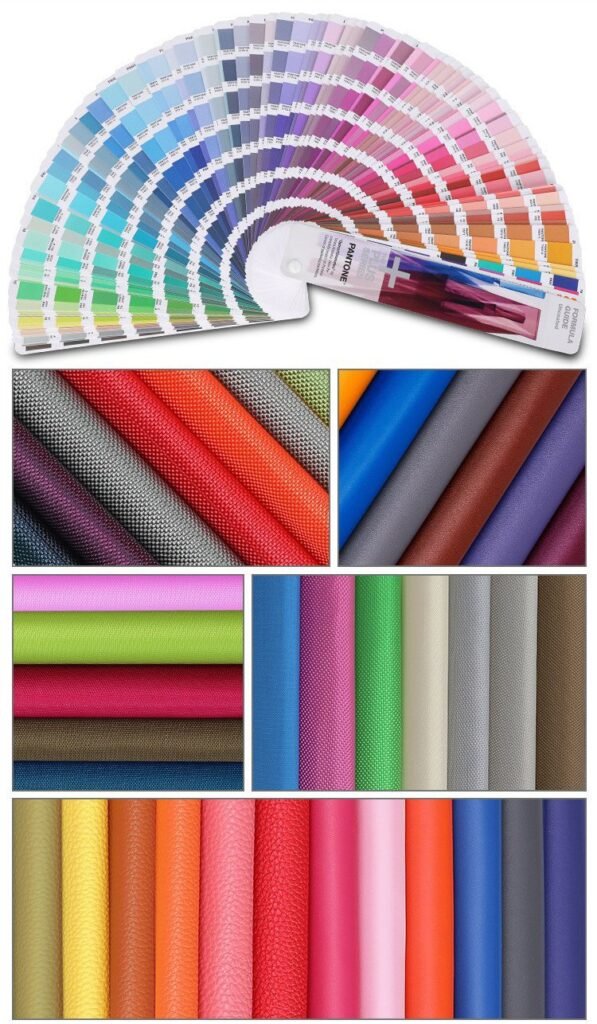
Color Categories:Our fabric color chart is divided into clear categories, making it easy for you to navigate and find your desired hues. Whether you’re searching for bold colors that stand out or subtle tones for a minimalist design, our organized color chart ensures quick selection. These categories cover a full spectrum of options, from bright and eye-catching shades to more muted and elegant tones, perfect for any polyester fabric project.
Color Swatches and Codes:Each category contains multiple swatches that display the available shades within that color family. Next to each swatch, you’ll find the Pantone color code, which ensures consistency and accuracy when placing your order. These Pantone codes serve as an industry standard, guaranteeing that the color you see on our chart is exactly what will be delivered in the fabric. This attention to detail ensures that your products maintain their visual appeal and stay true to your original design.
Custom Color Options:If our extensive standard chart doesn’t perfectly match your needs, we also offer fully customizable fabric colors. Simply provide us with your desired Pantone code or specific color samples, and our team will work with you to develop a fabric color that fits your exact vision. This option is ideal for companies looking for exclusive branding opportunities or designers aiming to create a unique and personal touch.
Digital Rendering Services:To help you visualize how your chosen fabric color will appear on your finished product, we provide digital rendering services. This allows you to preview how the selected color looks in context, whether it’s on a garment, bag, or other textile product. With this tool, you can fine-tune the color choice or make adjustments to other design elements before production begins, ensuring that your custom polyester fabric meets your expectations.
Production Process Of Fabric
At Szoneier factory, the production process of polyester fabric is a blend of advanced technology and meticulous craftsmanship. We begin with the polymerization of raw materials to create polyester fibers, which are then spun into yarn. These yarns undergo weaving or knitting to form the base fabric. To ensure top-tier quality, each stage of production is carefully monitored, from dyeing and finishing to applying special treatments like water resistance or UV protection. Our cutting-edge machinery allows us to produce fabrics in a wide range of textures and finishes, customized to meet the specific needs of your project. With our commitment to precision and excellence, you can count on durable, vibrant, and versatile polyester fabrics ready for any application.
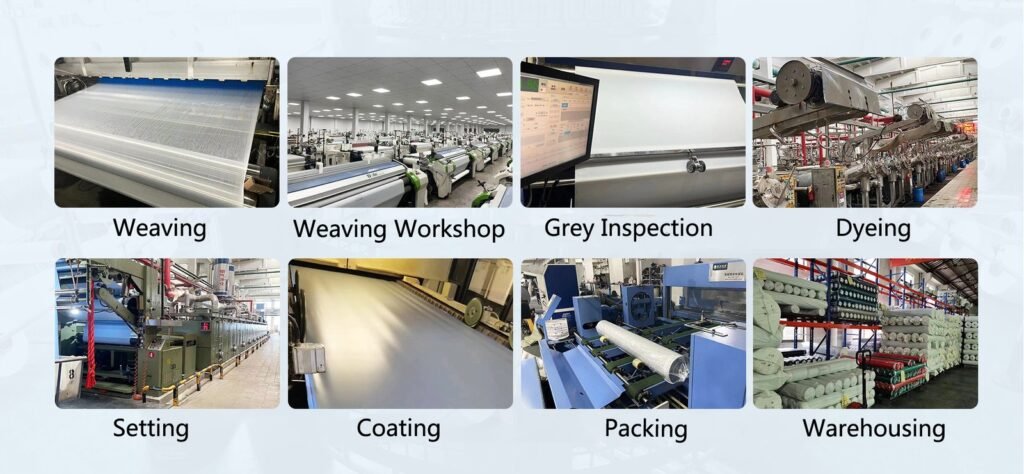
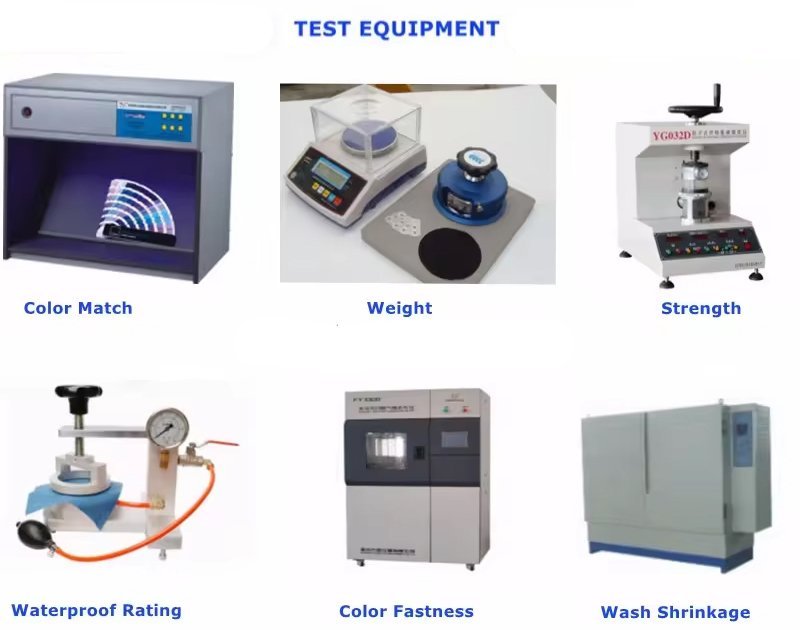
Testing Equipment Of Fabric Production
At Szoneier fabric production factory, we utilize state of the art testing equipment to ensure the highest standards of quality and durability. Our advanced machinery includes tensile strength testers, colorfastness testing equipment, abrasion resistance testers, and moisture control systems. Each piece of fabric undergoes rigorous testing for consistency, performance, and longevity, allowing us to guarantee top-quality products that meet both industry standards and customer expectations. This commitment to quality ensures fabric excellence from production to final delivery.
Make A Sample First?
Got a specific artwork, logo, or design concept in mind? We’re all ears! Share every detail—your preferred fabric type, Pantone colors, and any custom features you want. Our team will partner with you to nail your vision with precision. We’ll start by creating a fabric sample so you can touch, feel, and inspect the quality, texture, and color firsthand before committing to full production. This way, we tweak things until it’s exactly what you imagined. Let’s turn your ideas into a fabric that’s uniquely yours !
Video Of Product And Production
Get a behind the scenes look at our fabric production process with our exclusive factory video. where you can witness the fascinating journey of our polyester fabrics from raw materials to finished products. Our informative videos provide a behind-the-scenes look at the advanced techniques and skilled craftsmanship that define our manufacturing process. Whether you’re interested in the production methods or the innovative designs we offer, these videos reflect our dedication to quality and creativity in fabric development. Join us and explore the artistry of our fabric production!
Cooperating Brands Trusted
Your product is produced in reliable factory like our already cooperating international brand partners below:

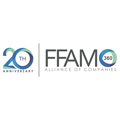



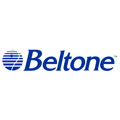





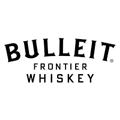
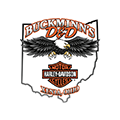





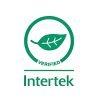
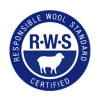
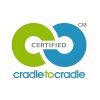
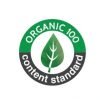
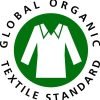
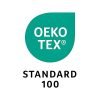



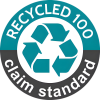
Spandex fabric, also known as elastane or Lycra, is a synthetic textile primarily made from polyurethane, a versatile polymer that gives it exceptional elasticity. The production begins with the synthesis of polyurethane through a chemical reaction between polyols (polyether or polyester-based) and diisocyanates, forming a block copolymer with alternating hard and soft segments. The soft segments, typically long-chain polyols, provide the stretch, while the hard segments, formed by urethane linkages, ensure structural stability. This molecular structure allows spandex to stretch up to 500%-800% of its original length and recover almost fully (>95% recovery rate), distinguishing it from natural fibers like cotton or synthetic ones like polyester.
To make spandex usable, manufacturers add plasticizers, stabilizers, and pigments during production. Plasticizers enhance flexibility, reducing the glass transition temperature (Tg) from around 120°C to as low as -20°C, depending on the formulation. Stabilizers, such as antioxidants or UV inhibitors (e.g., benzotriazoles), protect the fiber from degradation due to heat, light, or chemicals, ensuring longevity. Pigments or dyes are incorporated to achieve a range of colors, though spandex often blends with other fibers for dyeing consistency. The fiber is produced via spinning methods—dry spinning (solvent evaporation) or wet spinning (coagulation in a bath)—extruding the polymer into fine filaments ranging from 5D to 400D (denier), with weights as low as 0.55g per 9,000m for 5D.
Spandex is rarely used alone due to its fragility (tensile strength ~20-50N/5cm in pure form). Instead, it’s blended with fibers like polyester, nylon, or cotton (5%-20% spandex content) to create fabrics with GSM ranging from 50 to 400+. For example, a 90% polyester/10% 40D spandex blend at 150 GSM combines spandex’s elasticity with polyester’s durability. The manufacturing process involves knitting or weaving these blends, followed by post-processing like heat setting (150°C-180°C) to lock in shape and stretch. This enhances its utility in apparel, medical, and industrial applications.
While spandex’s synthetic nature offers advantages—lightweight (100-300g/m² in blends), quick-drying (low moisture uptake ~1%-2%), and customizable—it relies on petroleum-based chemicals, raising environmental concerns. Innovations like bio-based polyols or recycled spandex are emerging to address sustainability. In essence, spandex fabric is a polyurethane marvel, engineered for stretch and resilience, with its composition refined through additives and blends to meet diverse needs.
Spandex fabric’s breathability is limited in its pure form but can be significantly improved when blended with other fibers. Spandex, made from polyurethane, is a non-porous synthetic fiber with a low moisture vapor transmission rate (MVTR) of approximately 10-20g/m²/24h. This means it allows minimal air or moisture to pass through, unlike natural fibers like cotton (MVTR ~200g/m²/24h) or even porous synthetics like polyester mesh (MVTR >500g/m²/24h). As a result, pure spandex traps heat and sweat against the skin, making it less comfortable for prolonged wear in hot or humid conditions, such as during intense physical activity.
However, spandex is rarely used alone. In blends—typically 5%-20% spandex with polyester, nylon, or cotton—breathability depends on the companion fiber and fabric construction. For instance, a knit blend of 90% polyester/10% 40D spandex at 150 GSM, common in yoga pants, leverages polyester’s wicking properties to draw sweat away from the skin, drying quickly (30-60 minutes) due to spandex’s low water retention (1%-2% absorbency). Knitted structures, with their open loops, further enhance air circulation compared to woven fabrics, boosting breathability to an MVTR of 50-100g/m²/24h in lightweight blends (100-200 GSM). Post-processing treatments, like moisture-wicking finishes applied at 100°C-140°C, can increase this further, making the fabric more suitable for activewear.
In contrast, heavier blends (e.g., 85% cotton/15% 100D spandex at 250 GSM for stretch denim) or tightly woven structures reduce breathability, as the denser fabric limits airflow. Spandex’s elasticity (400%-800% stretch) ensures a snug fit, which can exacerbate heat retention if ventilation is poor. For example, a sports bra at 200 GSM might feel supportive but less breathable than a mesh-paneled version. Manufacturers often address this by incorporating spandex into open-knit designs (e.g., mesh with 20D spandex) or pairing it with breathable fibers like cotton, which balances stretch with comfort.
Environmental factors also play a role. Spandex resists mildew due to its low moisture uptake, but its lack of breathability can lead to discomfort in humid climates unless mitigated by design. For applications like swimwear or leggings, breathability is less critical than quick drying, where spandex excels. In summary, while pure spandex isn’t breathable, its blends—especially lightweight, knitted ones with wicking treatments—offer sufficient air circulation for most uses, making it a practical choice for stretch-focused apparel when paired thoughtfully.
Spandex fabric is renowned for its extraordinary stretch, making it one of the most elastic textiles available. Composed of polyurethane, spandex can stretch 500%-800% of its original length, depending on its denier (D) and blend composition, with a recovery rate exceeding 95%. This means a 10cm piece can extend to 50-80cm and snap back nearly to its starting size, far surpassing natural fibers like cotton (~5%-10% stretch) or synthetic rivals like nylon (~20%-40%). This elasticity stems from its molecular structure—long, flexible polyurethane chains with soft segments that elongate under tension and hard segments that ensure shape retention.
The stretch varies by denier and GSM. Fine spandex (5D-20D) in ultra-light blends (50-100 GSM) achieves the highest elongation—up to 850%—ideal for sheer hosiery or lingerie, where a second-skin fit is key. For example, a 90% polyester/10% 20D spandex fabric at 80 GSM might stretch 700%, offering lightweight flexibility. Medium deniers (40D-70D) in 150-200 GSM blends, common in leggings, stretch 400%-600%, balancing elasticity with durability (80-120N/5cm tensile strength). Heavier spandex (150D-400D) in 300-400+ GSM fabrics, used for shapewear or industrial straps, stretches 150%-400%, prioritizing strength (200-400N/5cm) over extreme elongation.
Blending affects stretch too. A 5% spandex content in a cotton tee (130 GSM) might limit stretch to 20%-30%, as cotton dominates, while a 20% spandex blend with nylon (200 GSM) could reach 500%, enhancing flexibility. Knitted spandex fabrics stretch more (up to 800%) than woven ones (200%-400%), due to the looser structure of knits. Post-processing, like heat setting at 150°C-180°C, stabilizes this stretch, ensuring the fabric retains its elasticity after repeated use (shrinkage <5%).
Spandex’s stretch makes it ideal for form-fitting apparel—leggings hug the body, swimwear moves with the wearer, and compression gear supports muscles. However, it has limits. Overstretching beyond its capacity (e.g., >800% for 20D) can reduce recovery, and high heat (>120°C) or chlorine exposure weakens elasticity over time (e.g., 20%-30% loss after 50 pool hours). In practice, its stretchiness is tailored to the task—maximum for delicate wear, moderated for robust uses. Overall, spandex’s ability to stretch 500%-800% with near-perfect recovery defines its versatility, making it indispensable for stretch-driven applications.
Spandex fabric’s durability varies depending on its form, blend, and use, but it’s generally moderate on its own and significantly enhanced when combined with other fibers. Pure spandex, made from polyurethane, has a tensile strength of 20-50N/5cm and abrasion resistance of about 10,000 Martindale cycles, making it fragile alone. Its fine filaments (5D-400D) stretch 500%-800%, but this elasticity comes at the cost of wear resistance—sharp objects or friction can easily damage it. However, spandex is rarely used unblended, and its durability shines in combination with stronger fibers like polyester, nylon, or cotton.
In blends, spandex’s durability depends on its denier, GSM, and companion fiber. A lightweight blend (e.g., 90% polyester/10% 40D spandex at 150 GSM) offers 50-80N/5cm tensile strength and 20,000-30,000 cycles, suitable for swimwear or leggings. The polyester adds abrasion resistance, while spandex provides stretch (500%-600%). Medium blends (e.g., 85% cotton/15% 100D spandex at 250 GSM) increase strength to 120-150N/5cm and durability to 30,000-40,000 cycles, making them robust for stretch denim or shapewear. Heavy blends (e.g., 80% nylon/20% 200D spandex at 350 GSM) reach 200-250N/5cm and over 50,000 cycles, ideal for industrial straps or heavy shapewear.
Environmental factors affect durability. Spandex resists mildew due to low moisture uptake (1%-2%), but it’s sensitive to heat (>120°C softens, >150°C degrades), UV light (200-500 hours exposure weakens it), and chlorine (20%-30% elasticity loss after 50 pool hours). Post-processing mitigates these weaknesses—UV inhibitors extend outdoor life to 6-12 months, anti-chlorine coatings double swimwear durability, and heat setting ensures shape retention. For example, a 180 GSM leggings fabric with 70D spandex can withstand years of washing and wear if cared for properly (cold wash, air dry).
Care is crucial. Harsh detergents, bleach, or high-heat drying can break down polyurethane chains, reducing stretch and lifespan. A well-maintained 200 GSM sports bra might last 2-3 years, while neglected heavy use cuts this to months. Compared to cotton (softens over time) or nylon (higher abrasion resistance), spandex’s durability relies on its blend and treatment. In summary, while pure spandex is less durable, its blends—especially medium to heavy GSM with protective finishes—offer impressive resilience (20,000-50,000+ cycles), making it reliable for stretch-focused applications when paired thoughtfully.
Caring for spandex fabric is straightforward but requires attention to preserve its elasticity and durability, given its polyurethane composition. Spandex stretches 500%-800% and recovers well (>90%), but it’s sensitive to heat, chemicals, and UV light, which can degrade its fibers. Proper care ensures it lasts—whether in lightweight leggings (150 GSM) or heavy shapewear (300 GSM)—and maintains its performance across uses like activewear, swimwear, or industrial straps.
For washing, use cold or lukewarm water (<40°C) with a mild detergent. Hand washing is ideal—submerge the fabric, gently agitate, and rinse thoroughly—but machine washing on a delicate cycle in a mesh bag works too. Avoid bleach or harsh chemicals (e.g., chlorine), as they break down polyurethane, reducing stretch by 20%-30% after a few exposures. For example, a 90% polyester/10% 40D spandex swimsuit at 130 GSM can lose elasticity after chlorine exposure unless it’s anti-chlorine treated. Spot clean stains with a damp cloth and mild soap, avoiding aggressive scrubbing that wears the fibers (abrasion resistance ~20,000 cycles in blends).
Drying spandex requires caution. Air drying is best—lay it flat or hang it in a shaded, well-ventilated area to avoid UV damage (200-500 hours exposure weakens untreated spandex). Avoid dryers, as heat above 120°C softens the fiber, and >150°C causes permanent deformation, cutting stretch by 10%-20%. For instance, a 200 GSM leggings fabric with 70D spandex might shrink or lose shape if tumble-dried. If ironing is needed, use a low setting (<100°C) with a pressing cloth, as direct heat damages the surface and elasticity.
Storage matters too. Keep spandex fabrics in a cool, dry place (<60% humidity, 15-25°C) to prevent moisture-related degradation, though its low uptake (1%-2%) resists mildew. Fold rather than hang heavy items (e.g., 350 GSM shapewear) to avoid stretching over time. For swimwear or activewear, rinse after use—salt, sweat, or chlorine can weaken fibers if left unwashed.
Compared to cotton (machine-washable but shrinks) or nylon (more heat-resistant), spandex needs gentler care but rewards with longevity. A well-cared-for 180 GSM yoga top can last 2-3 years, while neglect halves this. In summary, wash spandex cold, air dry it, and avoid heat or bleach to maintain its stretch (400%-800%) and durability (20,000-50,000 cycles in blends), ensuring it performs across seasons.
Frequently Asked Questions
Welcome to our FAQ section on customized nylon fabrics, where we answer your most common questions and provide insights into fabric types, customization options, features, and order-related details. Whether you’re looking to learn more about the various nylon fabric styles, specialized finishes, or the ordering process, we’re here to help. Our goal is to ensure that you have all the information needed to make informed decisions about selecting the perfect nylon fabric for your unique project.

